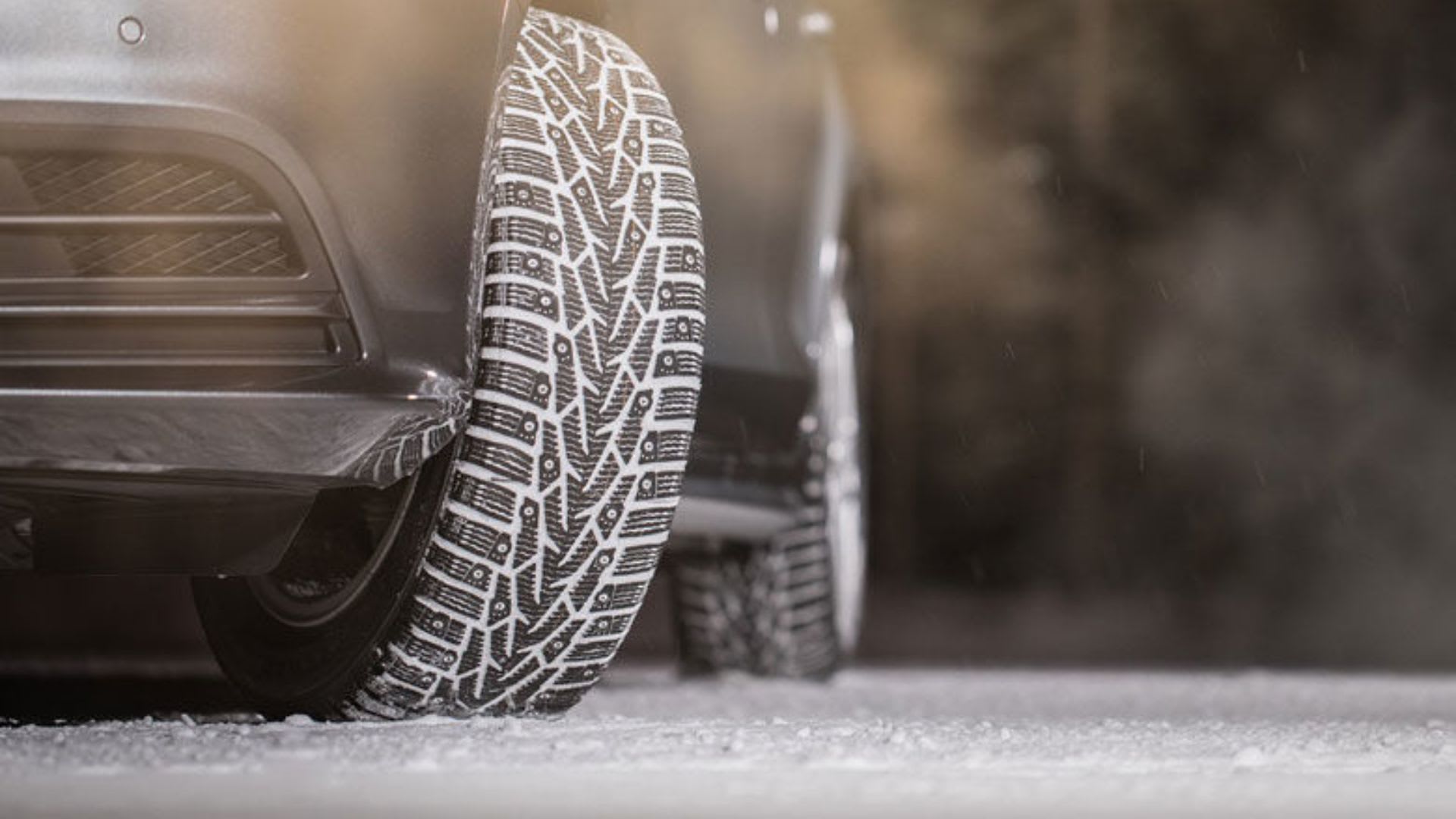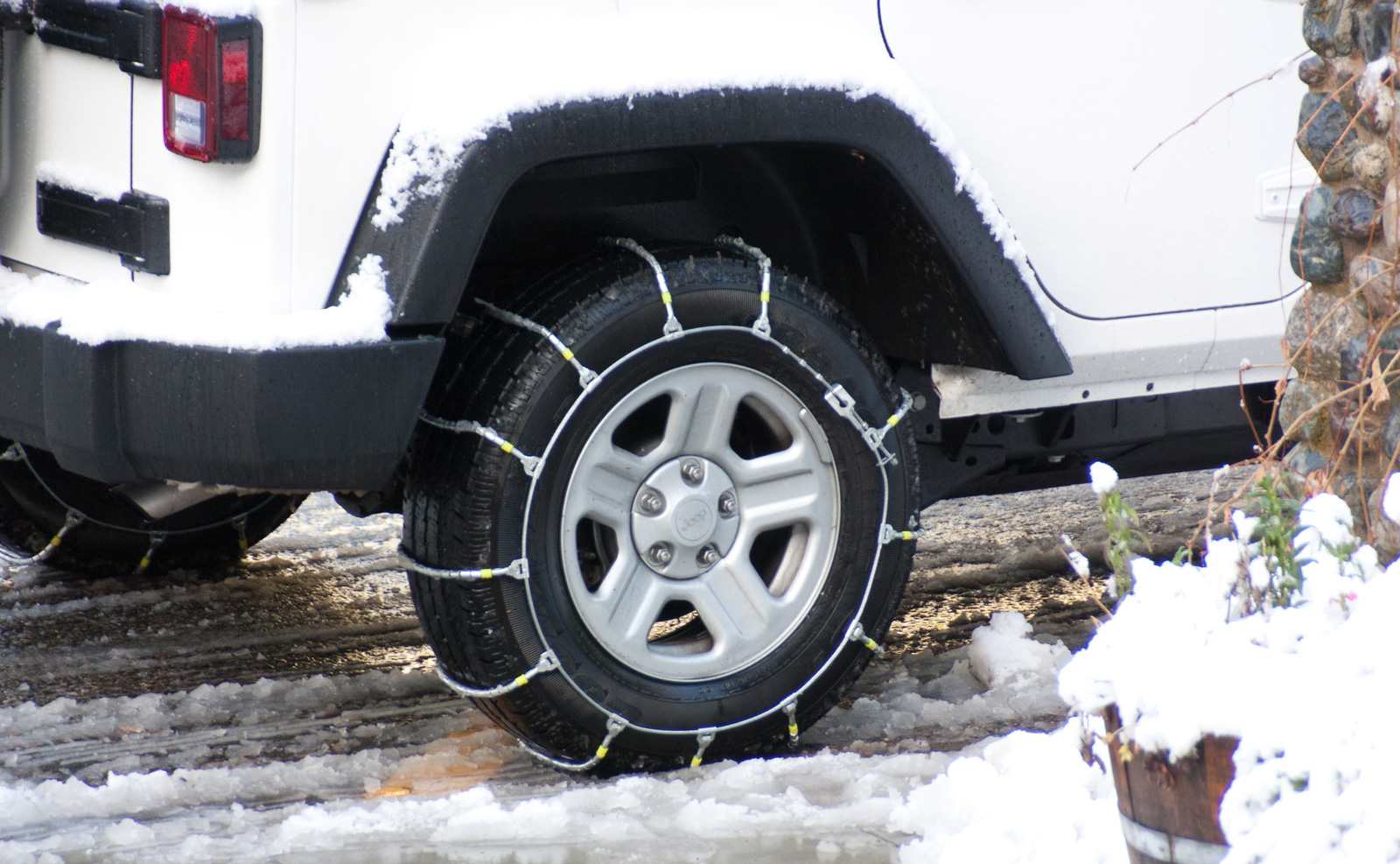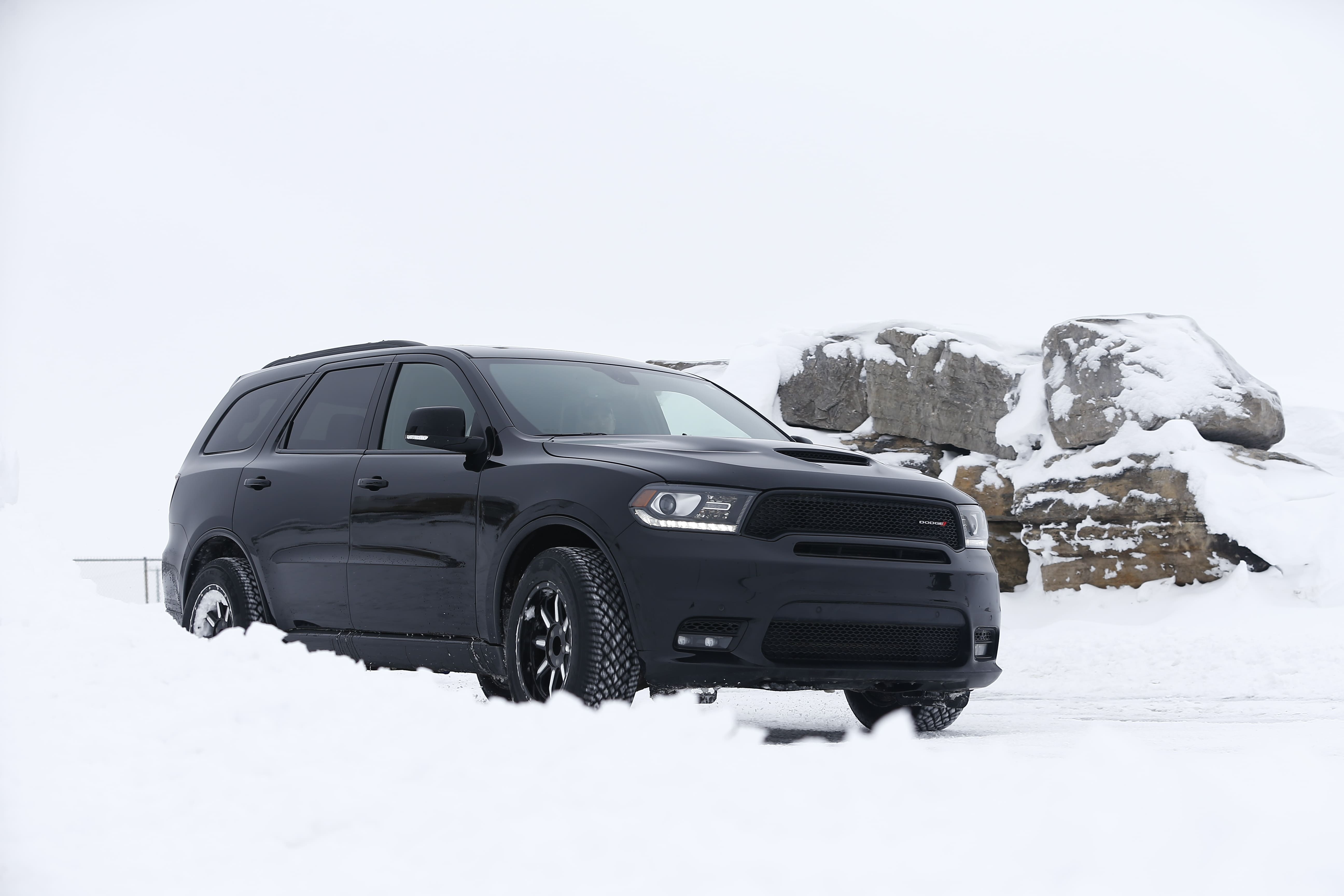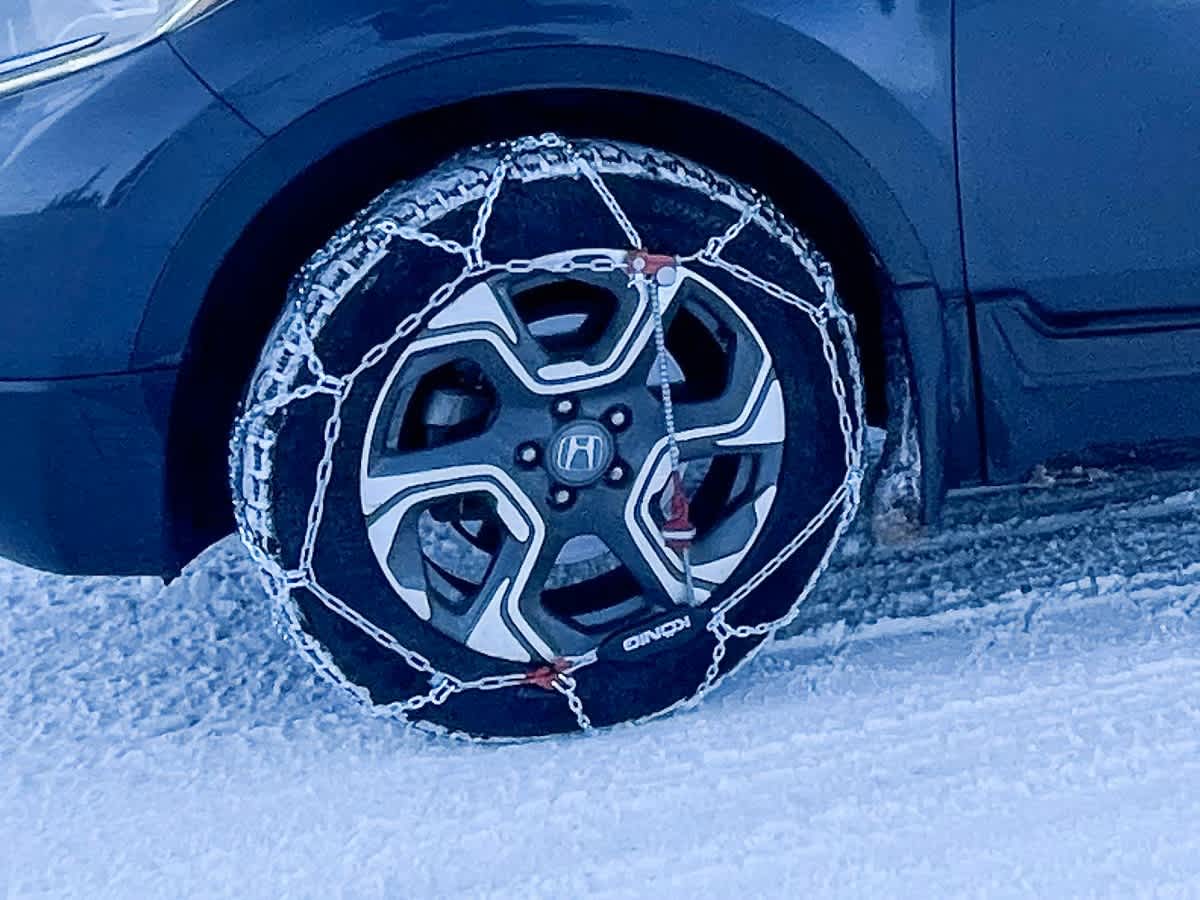Tire maintenance & safety
Best price guarantee
Tire replacement coverage
24/7 roadside assistance
Easy returns

Driving in winter can be treacherous, with snow and ice creating slippery, hazardous conditions. To navigate these challenges safely, it's crucial to ensure your vehicle is properly equipped.
When it comes to maximizing traction on snowy and icy roads, two common solutions are snow chains and winter tires. Each has its advantages and disadvantages, making it important to understand their differences to make an informed decision.
In this article, we'll explore the pros and cons of snow chains and winter tires, helping you determine the best option for your winter driving needs. We'll also provide guidance on when to use each and offer tips for safe winter driving.
What Are Snow Chains and How Do They Work?

Snow chains, also known as tire chains, are metal chains that wrap around your vehicle's tires to provide extra traction on snow and ice. They work by creating a rough, textured surface that can bite into the snow, allowing your tires to grip the road better.
The chains are designed to be installed on your tires when needed and removed when conditions improve. They are typically used in severe winter weather, such as heavy snowfall or icy roads, and are often required by law in some mountainous regions during winter.
To use snow chains effectively, it's important to follow the manufacturer's instructions for installation and to drive at reduced speeds—usually under 30 mph. Driving too fast with chains can cause them to break or damage your vehicle. It's also crucial to remove the chains when you reach cleared roads, as driving on bare pavement can cause damage to both the chains and the road surface.
While snow chains can provide a high level of traction in deep snow and on icy roads, they do have some drawbacks. They can be difficult to install, especially in cold, snowy conditions, and require periodic tightening during use. They also create a rough, noisy ride and can potentially damage your vehicle if not used properly.
Despite these limitations, snow chains remain a valuable tool for drivers who need to navigate severe winter conditions occasionally. They are relatively inexpensive compared to buying a set of dedicated winter tires and can be a lifesaver in unexpected snow storms or when driving in remote, mountainous areas.
What Are the Pros and Cons of Using Snow Chains?
Snow chains serve as an essential accessory for drivers facing harsh winter environments, designed to tackle the challenges of snow-packed and icy roads. Their primary function is to improve the vehicle's grip on slick surfaces, making them invaluable for navigating treacherous conditions. This makes them particularly useful for those who encounter irregular yet severe snow events or need to traverse rugged, mountainous paths.
Pros:
-
Improved Vehicle Control: Snow chains provide enhanced control on icy and snowy surfaces, helping prevent skids and enhancing stability. This makes them ideal for handling unexpected weather changes during travel.
-
Affordable Winter Solution: In comparison to purchasing a complete set of winter tires, snow chains offer a more economical choice. They are an attractive option for those who experience infrequent severe winter conditions but still wish to prepare adequately.
-
Adaptability and Convenience: Chains offer the advantage of being applied as needed and removed once conditions clear, providing adaptability for drivers. This flexibility is beneficial for occasional use or during unforeseen snowfalls.
Cons:
While valuable, snow chains do present challenges that must be acknowledged. The task of fitting them onto tires can prove demanding, especially when conditions are less than favorable. This process may deter some drivers, particularly when dealing with extreme cold or active snowfall.
-__ Reduced Driving Speeds__: Speed must be carefully moderated when chains are in use, as higher velocities can compromise their integrity and pose risks to the vehicle.
-
Less Comfortable Ride: Chains can create a bumpy and disruptive driving experience, which may not be ideal for long journeys. The added vibrations and noise are particularly noticeable on roads with minimal snow.
-
Damage Risk on Clear Roads: Using chains on bare pavement can damage both the road and your tires. Road damage leads to potholes, while tire damage could lead to blowouts.
Snow chains offer a practical solution for enhanced traction during occasional severe winter conditions. However, their use requires an understanding of their limitations and a commitment to proper installation and maintenance.
What Are Winter Tires and How Are They Different?

Winter tires, also known as snow tires, are crafted to excel in cold weather conditions using advanced materials and design techniques. Unlike their all-season counterparts, winter tires incorporate a unique rubber compound that remains soft and malleable even when temperatures plummet, ensuring optimal road contact. This characteristic is vital for maintaining traction on icy surfaces, where other tires might become rigid and less effective.
The distinctive tread pattern of winter tires sets them apart from other types. These tires boast deeper tread grooves, intricate biting edges, and numerous sipes—small channels that enhance grip on snowy and wet surfaces. This pattern efficiently displaces snow and slush, reducing the risk of skidding and enhancing stopping power. Such features make winter tires highly effective in navigating various challenging conditions, from light snowfall to slushy roads.
Winter tires provide a quieter and more comfortable driving experience compared to the rumble of chains. Designed for continuous winter use, they eliminate the need for repeated installation and removal, offering a seamless transition into and out of the winter season. This makes them an excellent choice for those who frequently drive in wintry conditions, providing reliable performance and safety without the inconvenience associated with chains.
Factors to Consider When Deciding Between Snow Tires and Chains
Selecting the appropriate winter traction solution involves a thoughtful evaluation of several key factors. The nature and intensity of winter conditions in your region is paramount. In areas where snow and ice are persistent throughout the season, winter tires can provide consistent and reliable performance, offering peace of mind for daily commutes and long journeys alike. On the other hand, snow chains prove advantageous in regions with occasional severe weather, providing a temporary yet effective solution for sudden snowfalls or icy roads.
The landscape and road types you navigate regularly will also influence your decision. For drivers frequently encountering steep or curved roads, particularly those in mountainous or less maintained areas, the enhanced grip of snow chains can be invaluable during intense snowfalls. Conversely, winter tires offer excellent performance on regularly maintained and plowed urban roads, where conditions do not typically reach extremes.
Your driving style and confidence in handling winter conditions should guide your choice. Experienced drivers may prefer the seamless integration of winter tires for their balance of grip and comfort, while those less accustomed to winter roads might find security in the additional traction of chains during inclement weather. It's essential to consult local regulations regarding chain use, as some areas mandate their application in specific conditions, especially in high-elevation or challenging terrains.
Budgetary considerations are vital in making an informed decision. While snow chains are initially more affordable, their practical use is limited by road surface conditions and speed restrictions. Winter tires, with their higher initial cost, offer prolonged usability throughout the winter season without the need for constant adjustment or removal, providing a more hassle-free driving experience. Carefully weigh these factors to determine the best fit for your winter driving needs.
Are Snow Chains Necessary If You Have Winter Tires?
Winter tires are designed to handle a variety of cold weather conditions, offering impressive traction and safety. However, their performance can be challenged during severe snowstorms or when navigating particularly steep, icy terrains. In these instances, snow chains enhance the grip, ensuring you maintain control and stability.
For those driving through mountainous areas, it's vital to check local requirements. Certain regions enforce the use of snow chains during harsh winter conditions, irrespective of the tires fitted on your vehicle. This measure acts as a safeguard, ensuring all vehicles maintain adequate traction on challenging roads.
Assessing your personal winter driving needs will help determine if snow chains should accompany your winter tires. Consider the typical weather patterns and road conditions in your area to make an informed choice. By examining these elements, you can decide whether snow chains are a necessary addition for ensuring safety in the most demanding winter environments.
Tips for Safe Winter Driving with Tires or Chains

Preparing your vehicle for winter conditions goes beyond choosing the right tires or chains—it requires diligent attention to installation and upkeep. Opt for installing winter tires as a complete set to ensure balanced handling and consistent traction. This approach maintains stability during sudden maneuvers and minimizes skidding risks.
Cold temperatures often result in decreased tire pressure, so regular checks are crucial. Proper inflation maintains the tire's contact with the road, ensuring optimal grip and handling. Use a reliable tire gauge to monitor pressure, adjusting as needed to adhere to the manufacturer's recommendations.
Adapting your driving style is essential for maintaining control on icy or snowy surfaces. Implement gradual inputs when accelerating, braking, and steering to sustain vehicle stability. Anticipate stops and turns in advance, allowing for smooth execution and reducing the likelihood of losing control.
Maintaining an adequate distance from other vehicles is vital, particularly on slippery roads. Increased following distances allow more time to react, while reduced speeds enhance vehicle control. This approach ensures a safer driving experience under winter conditions.
If you choose to carry snow chains, having them available in your vehicle throughout the winter ensures preparedness for sudden weather changes. Familiarize yourself with the installation process in a safe setting, which will save time and reduce stress in adverse conditions. Always ensure chains are removed before driving on clear roads to prevent unnecessary wear and maintain equipment longevity.
Navigating winter roads safely requires careful consideration and preparation. Whether you opt for winter tires, snow chains, or a combination of both, prioritizing your safety and adapting your driving style to the conditions is essential. When you're ready to equip your vehicle for the winter season, we invite you to shop for tires online with SimpleTire and discover the best deals to keep you and your loved ones safe on the road.
Ready to find the perfect tires?
Search By